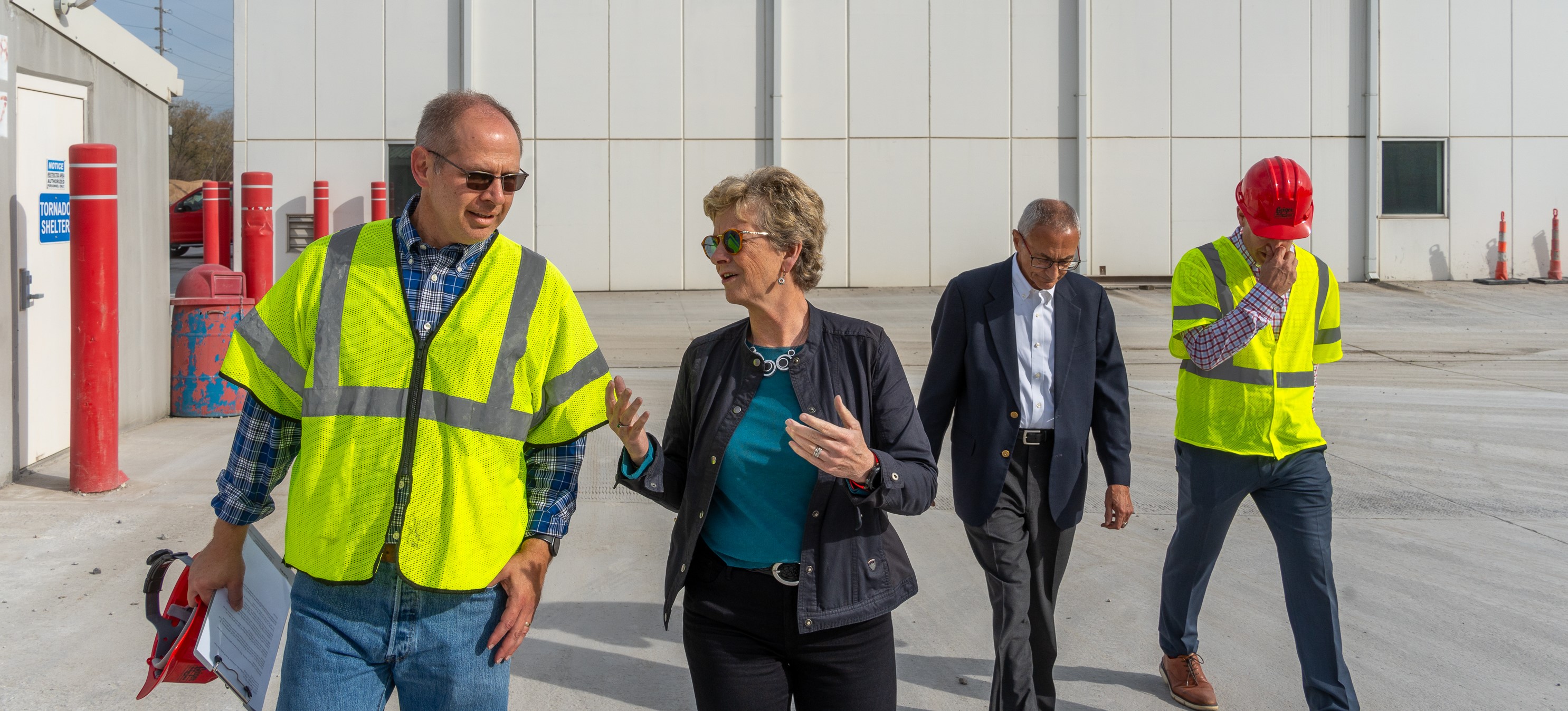
GSA pilot spurring market for clean construction materials
Post filed in: Sustainability
As part of the Biden-Harris Administration’s Federal Buy Clean Initiative, GSA is helping spur demand for low-emissions manufacturing and materials by leveraging the agency’s purchasing power to support American manufacturers who cut emissions while creating good jobs.
This year, GSA has seen industry start to answer the call for lower-carbon options for building materials as the agency implemented a six-month pilot focused on buying clean. This market catalyst is helping GSA as it starts to invest $2 billion in substantially lower embodied carbon (LEC) materials at more than 150 federal building projects nationwide, courtesy of the historic investments in climate-smart materials from the Inflation Reduction Act. Some of the cleanest materials in the world are made in the U.S., so these investments will help meet climate goals and support domestic manufacturing and economic growth.
“We gathered great input from industry this year, and it’s clear that we’re seeing growing markets for American manufacturers that offer innovative low embodied carbon materials,” said GSA Administrator Robin Carnahan. “It’s exciting to see homegrown firms that are gearing up to lead with products made with cleaner manufacturing processes and lower emissions while providing value to taxpayers and creating good-paying jobs along the way.”
The pilot, which ended in November, focused on four carbon-intensive construction materials—asphalt, concrete, glass, and steel—that contribute significant greenhouse gas emissions in their supply chains, from raw materials to transportation to manufacturing. For these materials, GSA’s LEC projects require Environmental Product Declarations (EPDs) that help buyers, including federal agencies, know a product’s environmental impacts, and help GSA determine whether a product’s global warming potential qualifies under the Environmental Protection Agency’s Interim Determination [PDF].
The pilot allowed GSA to gain insights into the construction materials market, including available materials’ EPDs, global warming potential, market availability, and cost. Since the pilot began, over 5,000 additional EPDs were published for asphalt, concrete, glass, and steel. Flat glass EPDs nearly doubled and asphalt EPDs nearly tripled.
GSA will continue to gather information and modify and award contracts for the 11 building projects in the pilot, while also moving forward with additional IRA project solicitations using a slightly updated version of the LEC requirements. These requirements may be further modified as GSA and other agencies collaborate to gather more market information.
Given GSA’s nationwide real estate portfolio, expanding the use of LEC construction materials is helping support overall market transformation toward clean materials, in line with the Federal Buy Clean Initiative and federal sustainability goals, including a net-zero emissions federal building portfolio by 2045 and net-zero emissions procurement by 2050.
“As the largest buyer of goods and services in the world, the federal government is using every available tool to build a better, stronger, cleaner future for American workers and communities,” said Andrew Mayock, Federal Chief Sustainability Officer and co-chair of the Buy Clean Taskforce, White House Council on Environmental Quality. “The Biden-Harris Administration’s Buy Clean Initiative helps catalyze the market to manufacture low-carbon materials - including asphalt, concrete, steel, and glass - here in America.”
“We are working to strengthen domestic manufacturing in order to build out the supply of at-scale commercialized technologies that can reduce emissions in the industrial sector to reach the Biden-Harris Administration’s goal of a net zero future,” said Giulia Siccardo, director of the office of manufacturing and energy supply chains at the U.S. Department of Energy.
“GSA’s programs represent one of the levers government can bring to bear on the demand side and are essential to drive adoption of low carbon materials as part of our whole-of-government efforts to decarbonize key manufacturing industries including steel, cement, glass and asphalt,” Siccardo added.
While advancing cleaner construction projects for federal buildings, GSA, along with the Department of Transportation’s Federal Highway Administration, will continue to engage industry and encourage businesses to publish robust EPDs. The Environmental Protection Agency is working to provide new grants and technical assistance to support EPD development and a new carbon labeling program for lower carbon construction materials. At the same time, the U.S. Department of Energy’s $6-billion Industrial Demonstrations Program will provide funding to accelerate emissions reductions in energy-intensive industries and help scale production of promising new technologies made in America.
This whole-of-government effort, funded by the Inflation Reduction Act, is part of the Administration’s unprecedented investment to reduce industrial emissions, revitalize a globally competitive domestic manufacturing base, and strengthen critical supply chains.
For more information, see the GSA LEC pilot webpage and FAQ.

 U.S. General Services Administration
U.S. General Services Administration
